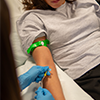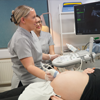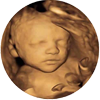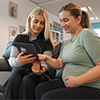Pregnancy is one of the most miraculous and transformative experiences in human biology. It’s a process that spans approximately nine months (40 weeks), during which a single fertilised egg grows into a complex human being. Understanding how this growth occurs isn’t just fascinating, but it also helps expectant parents, doctors, and scientists alike comprehend the intricate systems involved in the miracle of life. In this blog, we’ll explore the science of pregnancy and break down how babies grow, from conception to birth.
1. Conception: The Beginning of It All
The journey of pregnancy begins at conception, which occurs when a sperm from the father fertilises an egg from the mother. This single cell, known as a zygote, contains all the genetic information necessary to form a new human being. The zygote travels down the fallopian tube towards the uterus, where it will eventually implant itself in the uterine lining, marking the beginning of the first critical stages of pregnancy.
2. The Embryo: Weeks 1-8
Once implantation occurs, the zygote transforms into an embryo. Over the next few weeks, a highly organised series of developments take place. The embryo starts to form essential structures, including the neural tube (which will become the brain and spinal cord) and the heart. By the end of the 8th week, the embryo has taken on a human-like shape, with the rudimentary features of eyes, ears, arms, and legs.
At this stage, the embryo’s cells are rapidly dividing and differentiating into specialised cells that will eventually form all the organs and tissues in the body. The placenta also begins to develop, an organ that will provide nutrients, oxygen, and remove waste from the baby throughout the pregnancy.
3. The Fetus: Weeks 9-24
By week 9, the embryo has now developed into a foetus, and it enters a phase of rapid growth and further refinement of bodily systems. At this point, the foetus measures about 2-3 inches long and begins to move around, although the movements are still too subtle for the mother to feel.
During this stage, the baby’s organs and systems become more developed and functional. The heart continues to beat regularly, and the digestive and respiratory systems begin to mature. By 12 weeks, the foetus has recognisable fingers, toes, and facial features, and the baby can even make slight facial expressions.
Around week 16, the baby’s skin is forming, and fine hair (called lanugo) starts growing on the body. By week 20, many mothers start to feel the baby moving, known as quickening. These movements become stronger as the baby’s muscles and joints continue to develop.
The foetus continues to grow rapidly, and by the end of the second trimester (around week 24), it typically weighs about a pound and measures 9-10 inches long. At this point, the baby has a chance at survival outside the womb, although it would require medical intervention.
4. The Third Trimester: Weeks 25-40
The final trimester of pregnancy is marked by continued growth and the finishing touches on the baby’s organs and systems. By 28 weeks, the baby’s lungs are developing enough to be capable of breathing air, although they still need time to mature fully. The brain continues to grow rapidly, and the baby begins storing fat under its skin, which is essential for regulating body temperature after birth.
By week 32, the baby is growing quickly in size and weight. It starts to turn into the birth position, with its head usually pointing downward in preparation for labour. At this stage, the baby is around 4 pounds and can respond to sounds, light, and even taste.
As the baby approaches full term, it continues to add fat and muscle, gaining weight steadily. The skin becomes less wrinkled as it fills out, and the baby’s organs reach full maturity. By the time the pregnancy reaches 40 weeks, the baby typically weighs between 5.5 and 8 pounds and is about 18-20 inches long.
5. Labour and Birth: The Final Stage
When the baby is fully developed, the mother’s body goes into labour, which is the process of contractions that help expel the baby from the womb. Labour can last anywhere from a few hours to a day or more. During this time, the cervix dilates, and the baby moves through the birth canal. Once the baby is born, the umbilical cord is cut, and the baby begins life outside the womb.
The baby’s body immediately starts functioning independently, breathing air, digesting milk, and regulating temperature. Though the baby is born, the process of development continues as the baby grows, learns, and adapts to life in the outside world.
6. The Role of Nutrition and Health in Growth
Throughout pregnancy, the mother’s health and nutrition play crucial roles in the baby’s growth. The baby receives nutrients through the placenta, so it’s essential for the mother to maintain a healthy diet rich in vitamins, minerals, and proteins. Adequate folic acid, for example, is crucial in the early stages of pregnancy to prevent neural tube defects, while calcium and iron are essential for bone and blood development.
Regular prenatal care ensures that both mother and baby are healthy and allows healthcare providers to monitor the baby’s growth through ultrasounds and other diagnostic tests. Any complications, such as gestational diabetes or preeclampsia, can be addressed early to ensure the baby’s health is safeguarded.
Conclusion
Pregnancy is an incredible journey where complex biological processes work in harmony to create new life. From the moment of conception to the final stages of birth, a baby undergoes rapid and remarkable growth, developing all the systems necessary for life outside the womb. Understanding the science behind this process helps demystify the pregnancy experience, allowing parents to better appreciate the wonders of human development. As science continues to unlock more secrets about pregnancy and foetal development, we gain a deeper respect for the miracle of life.













 Packages & Prices
Packages & Prices  Important Info & Policies
Important Info & Policies  Your Scan
Your Scan